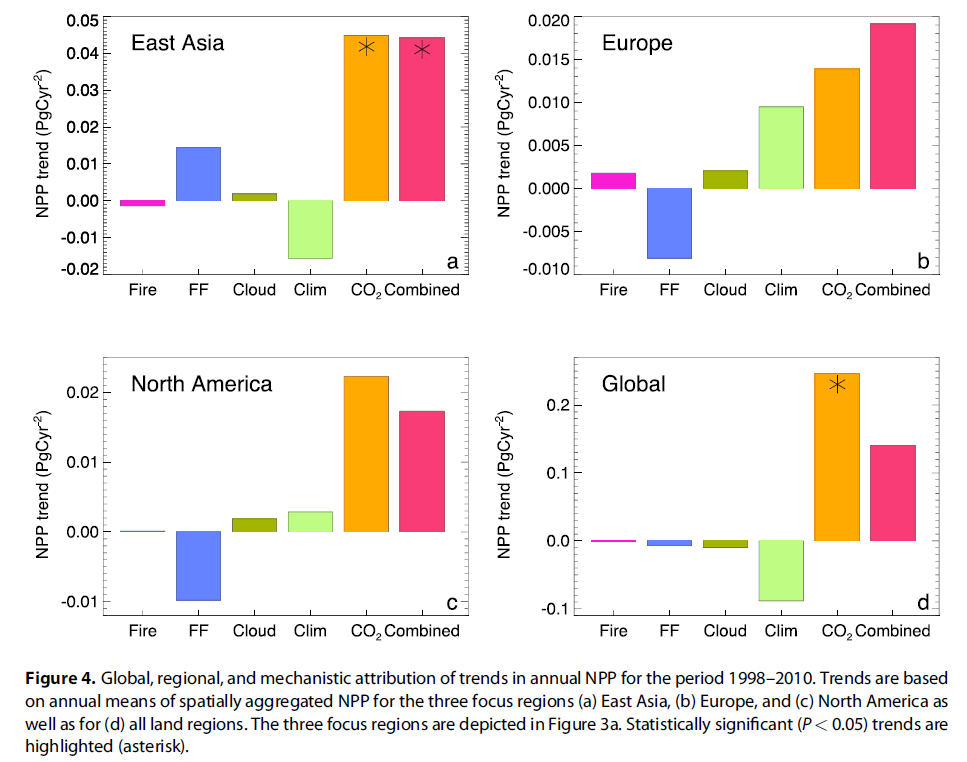Alexandru Rap: Research Interests: Diffuse radiation & vegetation
Enhanced global primary production by biogenic aerosol via diffuse radiation fertilization
Work published in Rap et al. (2018), Nature Geoscience. - (full-text access link here):
Terrestrial vegetation releases large quantities of plant volatiles into the atmosphere that can then oxidize to form secondary organic aerosol. These particles affect plant productivity through the diffuse radiation fertilization effect by altering the balance between direct and diffuse radiation reaching the Earth's surface. Here, using a suite of models describing relevant coupled components of the Earth system, we quantify the impacts of biogenic secondary organic aerosol on plant photosynthesis through this fertilization effect. We show that this leads to a net primary productivity enhancement of 1.23 Pg C yr-1 (range 0.76-1.61 Pg C yr-1 due to uncertainty in biogenic secondary organic aerosol formation). Notably, this productivity enhancement is twice the mass of biogenic volatile organic compound emissions (and ~30 times larger than the mass of carbon in biogenic secondary organic aerosol) causing it. Hence, our simulations indicate that there is a strong positive ecosystem feedback between biogenic volatile organic compound emissions and plant productivity through plant-canopy light-use efficiency. We estimate a gain of 1.07 in global biogenic volatile organic compound emissions resulting from this feedback.

Fires increase Amazon forest productivity through increases in diffuse radiation
Work published in Rap et al. (2015a), GRL and featured as a research highlight in Nature Climate Change - Firing photosynthesis:
Atmospheric aerosol scatters solar radiation increasing the fraction of diffuse radiation and the efficiency of photosynthesis. We quantify the impacts of biomass burning aerosol (BBA) on diffuse radiation and plant photosynthesis across Amazonia during 1998-2007. Evaluation against observed aerosol optical depth allows us to provide lower and upper BBA emissions estimates. BBA increases Amazon basin annual mean diffuse radiation by 3.4-6.8% and net primary production (NPP) by 1.4-2.8%, with quoted ranges driven by uncertainty in BBA emissions. The enhancement of Amazon basin NPP by 78-156 Tg C a-1 is equivalent to 33-65% of the annual regional carbon emissions from biomass burning. This NPP increase occurs during the dry season and acts to counteract some of the observed effect of drought on tropical production. We estimate that 30-60 Tg C a-1 of this NPP enhancement is within woody tissue, accounting for 8-16% of the observed carbon sink across mature Amazonian forests.

Small global effect on terrestrial net primary production due to increased fossil fuel aerosol emissions from Eastern Asia since the turn of the century
Work published in O'Sullivan et al. (2016), GRL:

|



